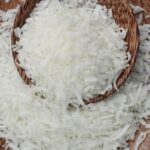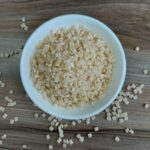CASHEW NUT SHELL OIL
In the world of sauce production, consistency, texture, and stability are key factors that determine the quality of the final product. Modified tapioca starch has become a go-to ingredient for manufacturers looking to enhance their sauces, providing a range of benefits that are hard to achieve with other starches. This article will explore seven key benefits of using modified tapioca starch in sauces and explain why it’s a game changer for the food industry.


Table of Contents
Toggle1. Superior Thickening Ability
One of the primary reasons manufacturers choose modified tapioca starch is its superior thickening properties. When added to sauces, it can create a thick, smooth texture without altering the sauce’s flavor. This makes it ideal for a wide range of sauces, from creamy dressings to hearty gravies. Its neutral taste also ensures that the starch won’t overpower or affect the sauce’s flavor profile, allowing chefs and manufacturers to achieve the desired consistency without compromising on taste.
2. Improved Freeze-Thaw Stability
Sauces often need to be frozen and reheated multiple times during their shelf life, especially in industrial and large-scale food production. Traditional starches can break down during this process, leading to a grainy or watery texture. Modified tapioca starch, however, offers excellent freeze-thaw stability, maintaining the sauce’s smooth texture even after several freeze-thaw cycles. This makes it an excellent choice for frozen or ready-made sauces, ensuring that the quality remains intact even after prolonged storage.
3. Enhanced Shear Stability
Sauces undergo rigorous processing during production, including mixing, blending, and sometimes high-speed shearing. These processes can often break down the structure of some starches, leading to a loss of thickness and texture. Modified tapioca starch is highly shear-stable, meaning it retains its thickening properties even after heavy processing. This feature ensures that the sauce maintains its desired consistency throughout the production line, reducing the risk of inconsistencies in the final product.
4. Clean Label Appeal
With consumers becoming more conscious of what goes into their food, the demand for clean label products is on the rise. Modified tapioca starch offers an excellent solution for manufacturers who want to maintain a clean label while still benefiting from the advanced functionality of a modified starch. Tapioca is a plant-based ingredient derived from the cassava root, and modified versions can still be labeled as “natural” or “clean,” appealing to health-conscious consumers who prefer fewer artificial ingredients in their food.
5. Neutral Flavor Profile
One of the standout features of modified tapioca starch is its neutral flavor profile. While some starches, such as corn or potato starch, may impart an undesirable taste or aftertaste to the sauce, modified tapioca starch is virtually flavorless. This makes it the perfect thickening agent for a variety of sauces, from delicate vinaigrettes to bold barbecue sauces. By using modified tapioca starch, manufacturers can focus on enhancing the sauce’s intended flavors without worrying about any unwanted starch aftertaste.
6. Improved Clarity
In many sauces, especially clear or glossy ones like glazes, the visual appearance is just as important as the taste. Modified tapioca starch has excellent clarity, allowing it to produce sauces that are not only smooth in texture but also visually appealing. For sauces where transparency or glossiness is crucial, such as fruit glazes or Asian-style dipping sauces, modified tapioca starch helps to create a polished, high-quality appearance.
7. Cost-Effectiveness
In large-scale food production, every cent matters. Modified tapioca starch offers an economical solution for sauce manufacturers. Its superior thickening power means that smaller quantities are needed compared to traditional starches, reducing overall ingredient costs. Additionally, its ability to enhance the texture and stability of sauces reduces the need for multiple additives, streamlining the production process and lowering costs even further. This combination of performance and cost-efficiency makes modified tapioca starch a valuable asset for sauce manufacturers looking to balance quality and budget.

Conclusion
Incorporating modified tapioca starch into sauces offers a multitude of benefits, from improved texture and stability to enhanced freeze-thaw performance. Its versatility, clean label appeal, and cost-effectiveness make it an ideal choice for manufacturers seeking to produce high-quality sauces that meet the demands of both consumers and industrial processes. Whether you’re creating a simple dressing or a complex, multi-ingredient sauce, modified tapioca starch can help deliver the perfect balance of texture, flavor, and appearance.
By understanding and leveraging the unique properties of modified tapioca starch, sauce producers can not only improve the quality of their products but also create offerings that stand out in a competitive market.












